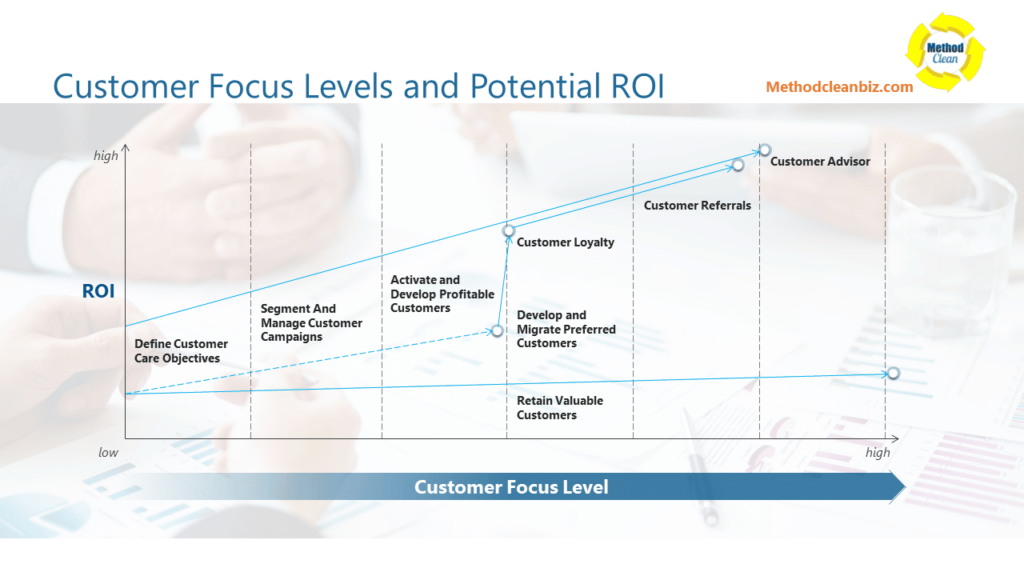Improve Your Cleaning Service Website: A Deep Dive into Memorable User Experiences
In the fast-paced digital landscape, where cleaning service businesses compete for online visibility, creating a memorable web experience has become imperative. The psychology of user behavior, particularly the peak-end rule, plays a crucial role in shaping how users perceive and remember their interactions with a website. In this comprehensive blog, we delve into the strategies of optimizing for user memory, derived from the behavioral economics research of the peak-end rule, to enhance the user experience for your cleaning services.
Understanding the Peak-End Rule: A Behavioral Economics Approach
The peak-end rule, a concept introduced by psychologists Daniel Kahneman and Barbara Fredrickson, posits that individuals primarily remember and judge an experience based on its peak moments and how it concludes.
In the realm of website design for cleaning services, this means strategically crafting positive and memorable peak experiences throughout the user journey.
Optimizing the Homepage: Creating Positive Peaks from the Start
The homepage serves as the digital front door to your cleaning service business. To optimize for user memory, it’s essential to create an engaging and positive “peak” experience on the homepage.
Incorporate captivating visuals, compelling headlines, and a clear value proposition to leave a lasting positive impression on users from the moment they land on your site.
Key Interactions Matter: Enhancing User Engagement and Satisfaction
Identify pivotal interactions within the user journey, such as the booking process, contact forms, or service inquiries. These interactions serve as opportunities to create positive peaks in the overall user experience. Ensure that these key interactions are user-friendly, aesthetically pleasing, and align with the overall design language of your cleaning service website.
Consistent Branding: The Foundation for a Lasting Positive Impression
Consistency in branding, color schemes, and messaging contributes to a cohesive and memorable user experience. A consistent visual identity reinforces positive memories and helps users easily recall and recognize your cleaning service brand.
Seamless Endings: The Art of Concluding User Journeys on a High Note
The conclusion of the user journey is as crucial as its beginning. Optimize for a smooth and positive ending by providing clear calls-to-action (CTAs), confirmation messages, and expressions of gratitude. A positive “end” experience ensures that users leave your website with a favorable impression, contributing to a lasting positive memory.
Interactive and Personalized Elements:
Incorporate interactive and personalized elements that emotionally engage users. Personalized greetings, interactive cleaning service quizzes, or visually appealing progress trackers enhance the overall user experience. Engaging elements contribute to positive peaks and elevate the memorability of interactions with your cleaning service website.
Collect and Utilize Feedback:
Actively seek user feedback to understand their perceptions and experiences. Use this valuable feedback to continually improve and refine aspects that contribute to positive peaks and endings. Implement changes based on user input, fostering an environment of continuous improvement and responsiveness to user needs.
Benefits of Optimizing for User Memory:
Repeat Business:
A positive and memorable user experience encourages users to return for future cleaning services. Consistently positive memories of interacting with your website can cultivate customer loyalty and repeat business.
Word of Mouth:
Users are more likely to share positive experiences with friends and family. Word-of-mouth recommendations contribute to building brand trust and can attract new customers to your cleaning service.
Brand Perception:
Positive memories of interactions with your website contribute to a favorable perception of your cleaning service brand. A well-designed and memorable user experience reinforces trust and credibility in the eyes of potential customers.
Examples of Cleaning Service Websites and the Peak-End Rule: Learning from the Good and the Bad
To better understand how the peak-end rule applies to cleaning service websites, let’s explore some examples, highlighting both effective and ineffective implementations of the rule in creating memorable web experiences.
Good Example:
Positive Peaks and Seamless Endings
Consider a well-designed cleaning service website that starts with an engaging homepage. High-quality images of sparkling, clean homes create an immediate positive peak, capturing the user’s attention. The use of clear headlines and a simple navigation menu contributes to a smooth and intuitive user experience.
As users explore the website, they encounter personalized elements such as a cleaning checklist tailored to their needs. This interactive feature not only engages them but also creates positive peaks throughout their journey. The booking process is straightforward, with visually appealing progress trackers and confirmation messages providing a pleasant ending to the user experience.
Consistent branding is maintained across the site, reinforcing a positive memory. Users leave the website with a favorable impression, remembering the engaging visuals, personalized interactions, and smooth navigation.
Bad Example:
Inconsistent Branding and Confusing Interactions
Now, consider a poorly designed cleaning service website that lacks a cohesive approach to the peak-end rule. The homepage is cluttered with irrelevant information, resulting in a negative peak for users trying to find essential details.
As users attempt to navigate through the website, inconsistent branding creates confusion. The color schemes and messaging vary across pages, contributing to a disjointed user experience. Key interactions, such as the booking process, are cumbersome and lack transparency, leading to frustration.
The website’s ending is abrupt and lacks clear CTAs or confirmation messages. Users may leave feeling uncertain about whether their booking was successful or what services they’ve selected. This negative ending significantly impacts their overall perception of the cleaning service.
Key Takeaways:
Consistency is Key:
- Good Example: Consistent branding throughout the website reinforces positive memories.
- Bad Example: Inconsistent branding confuses users and contributes to a negative perception.
Engage with Interactive Elements:
- Good Example: Personalized checklists and interactive features create positive peaks.
- Bad Example: Cumbersome and confusing interactions lead to frustration.
Clear Endings Matter:
- Good Example: Smooth booking processes with clear confirmation messages contribute to a positive ending.
- Bad Example: Abrupt endings with no confirmation leave users uncertain and dissatisfied.
By analyzing both good and bad examples, cleaning service businesses can gain valuable insights into how the peak-end rule influences user experiences.
Implementing the positive aspects, such as consistent branding, engaging interactions, and clear endings, can significantly enhance a cleaning service website’s overall effectiveness in creating memorable web experiences.




